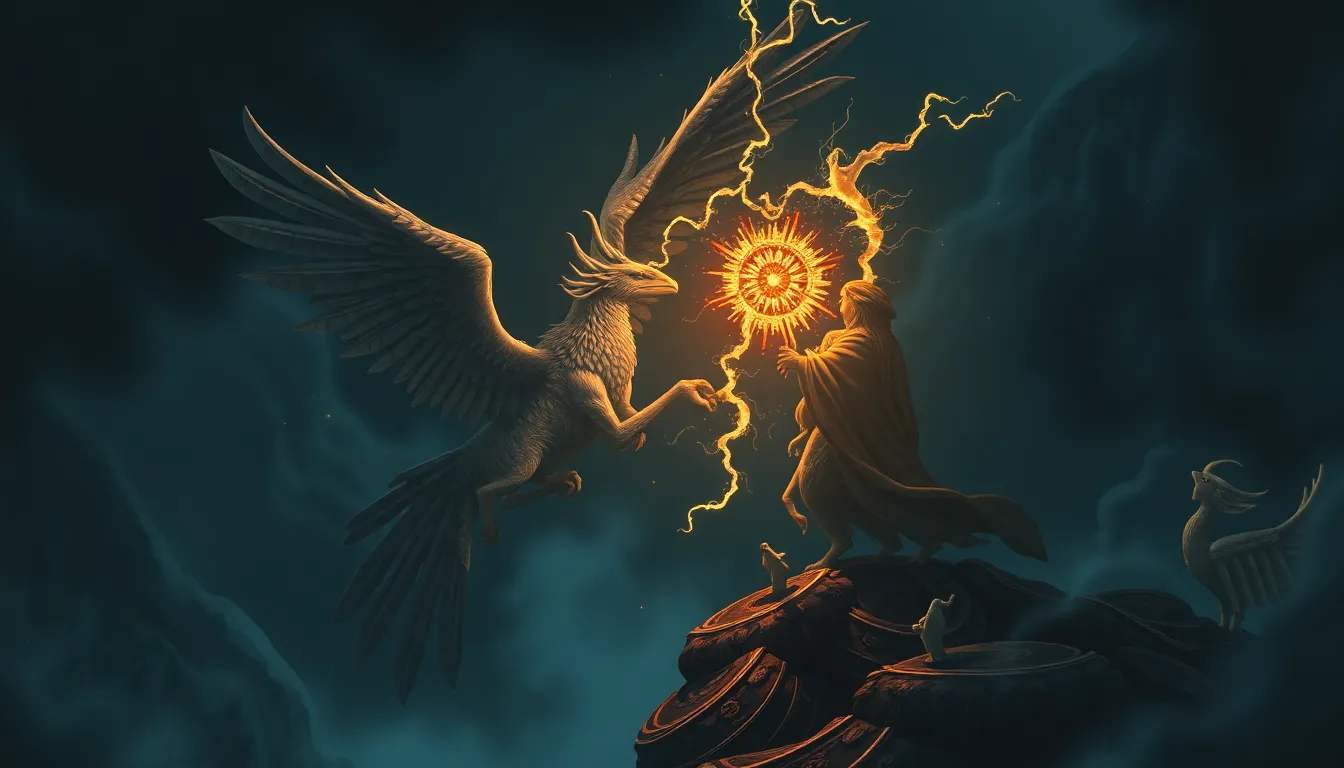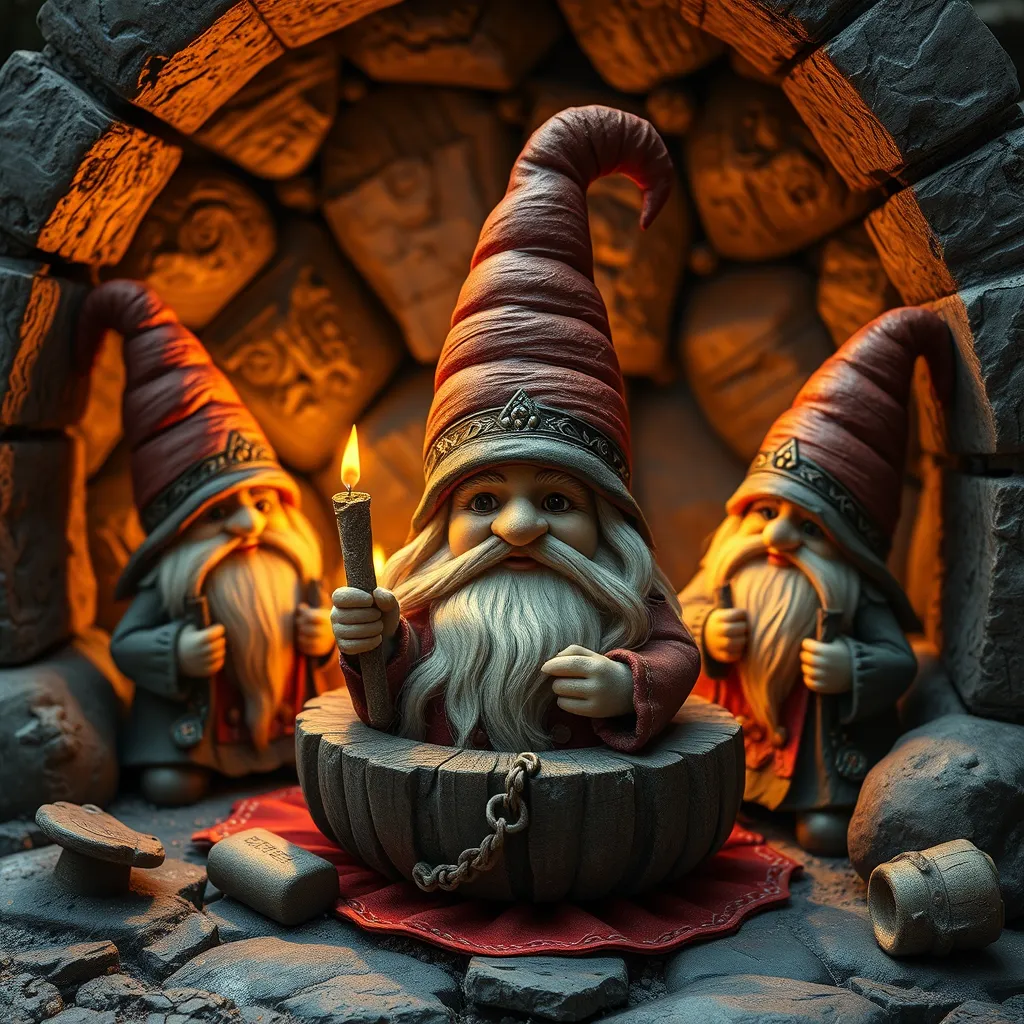The Simurgh’s Rescue of the Hero: A Tale of Grace and Intervention
I. Introduction
The Simurgh, a mythical bird in Persian mythology, has captured the imagination of many cultures with its grandeur and wisdom. This majestic creature is often portrayed as a symbol of grace, power, and divine intervention. The hero’s journey, a prevalent motif in literature, encapsulates the trials and tribulations that one must face on the path to self-discovery and greatness. This article aims to explore the intricate themes of grace and intervention through the lens of the Simurgh’s role in the hero’s journey.
II. The Simurgh: A Symbol of Wisdom and Power
The Simurgh is often depicted as a magnificent bird, larger than an eagle, with colorful plumage that reflects the sun’s brilliance. In Persian literature, particularly in the epic poem “Shahnameh,” the Simurgh is revered not just for its beauty but also for its wisdom and nurturing qualities.
- Attributes: The Simurgh is believed to possess supernatural abilities, including healing powers and the ability to fly across vast distances.
- Symbolic Meanings: It embodies the ideals of justice, benevolence, and the quest for knowledge.
Historically, the Simurgh has played a significant role in Persian culture, symbolizing the connection between the earthly realm and the divine. It serves as a reminder of the importance of wisdom and guidance in the face of adversity.
III. The Hero’s Journey: Challenges and Trials
At the heart of the narrative lies a hero, often characterized by their courage and determination. This hero embarks on a journey fraught with challenges that test their resolve and character.
- Introduction to the Hero Character: The hero is typically an ordinary individual who is called to adventure, often facing a significant personal crisis.
- Overview of Challenges: Common obstacles include battles with formidable foes, moral dilemmas, and internal conflicts.
- Importance of Trials: These trials are crucial for the hero’s growth, shaping them into the figure capable of overcoming great odds.
IV. The Moment of Intervention
As the hero grapples with overwhelming challenges, a moment arises when their need for rescue becomes paramount. The circumstances leading to this moment are often dire, highlighting the hero’s vulnerability.
The arrival of the Simurgh marks a pivotal point in the narrative. The bird’s descent from the heavens symbolizes grace, offering not just physical rescue but also emotional and spiritual support. This moment is rich with significance, as it illustrates the theme of divine intervention.
In analyzing the rescue scene, one can observe how the Simurgh’s intervention serves as a turning point for the hero, imbuing them with newfound strength and clarity. The symbolism of grace here is profound, demonstrating that help often comes from unexpected sources.
V. Themes of Grace and Intervention
In the context of this narrative, grace can be defined as the unmerited favor granted to the hero by a higher power, represented by the Simurgh. This concept transcends mere physical assistance; it embodies the idea of support during times of despair.
- Role of Divine Intervention: The Simurgh’s presence in the hero’s journey highlights the belief that divine forces aid those who are struggling, reinforcing the notion that we are never alone.
- Embodiment of Themes: The Simurgh is not just a character but a representation of the grace that exists in the universe, waiting to assist those in need.
VI. The Aftermath of the Rescue
Following the Simurgh’s intervention, the hero undergoes significant transformation. This change is not only physical but also moral and spiritual.
- Changes in the Hero: The hero emerges with renewed strength, wisdom, and a clearer sense of purpose.
- Impact of the Simurgh’s Intervention: This intervention alters the course of the hero’s journey, providing them with the tools necessary to face future challenges.
- Reflection on the Relationship: The bond formed between the hero and the Simurgh exemplifies the importance of mentorship and guidance in personal growth.
VII. Cultural Interpretations and Modern Relevance
The myth of the Simurgh has transcended cultures and eras, with variations appearing in various literary traditions. Its symbolism of grace and intervention resonates across different societies.
- Variations Across Cultures: Similar mythical creatures can be found in various mythologies, each representing the themes of wisdom and protection.
- Contemporary Interpretations: In modern contexts, the themes of grace and intervention can be seen in stories of redemption and support systems in society.
- Lessons for Modern Society: The tale encourages individuals to seek help and embrace the idea that support often comes from unexpected places.
VIII. Conclusion
In conclusion, the Simurgh plays a crucial role in the hero’s journey, symbolizing grace and divine intervention. The themes explored in this narrative remind us of the importance of seeking help and the transformative power of support in overcoming life’s challenges.
As we reflect on this tale, let us embrace the ideals of grace and intervention in our own lives, recognizing that we too can be a source of strength for others in their times of need.



